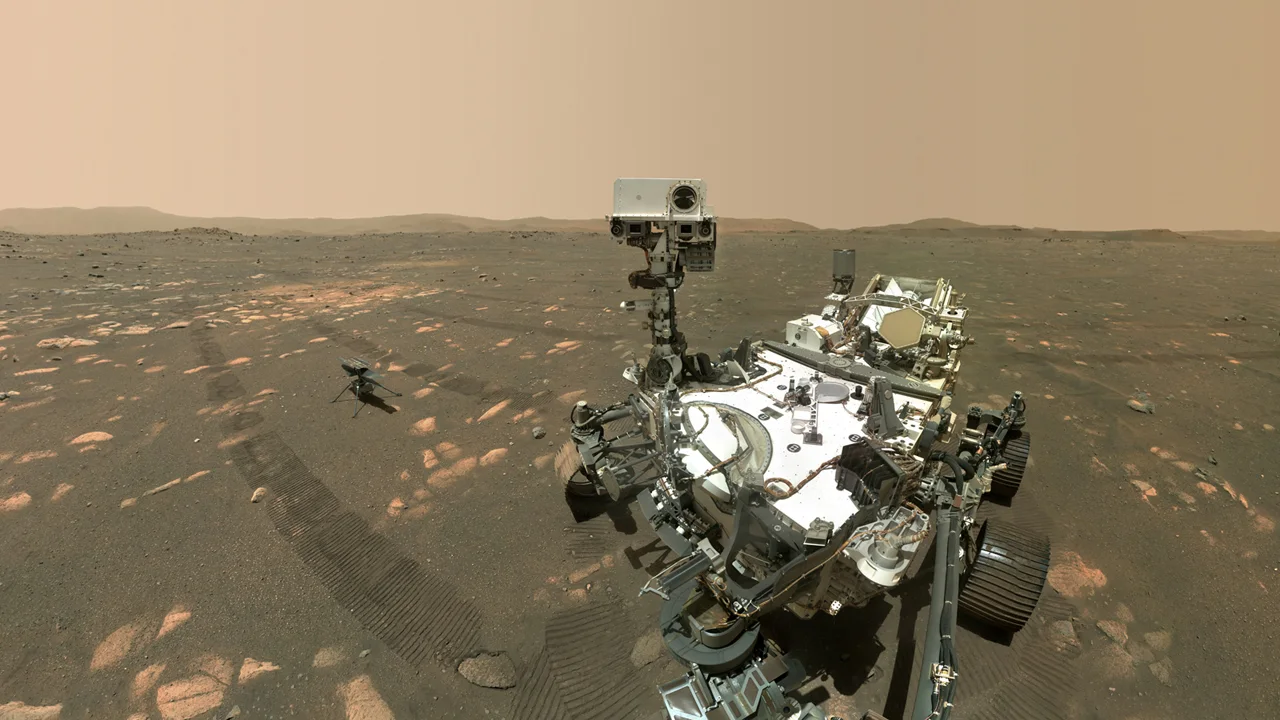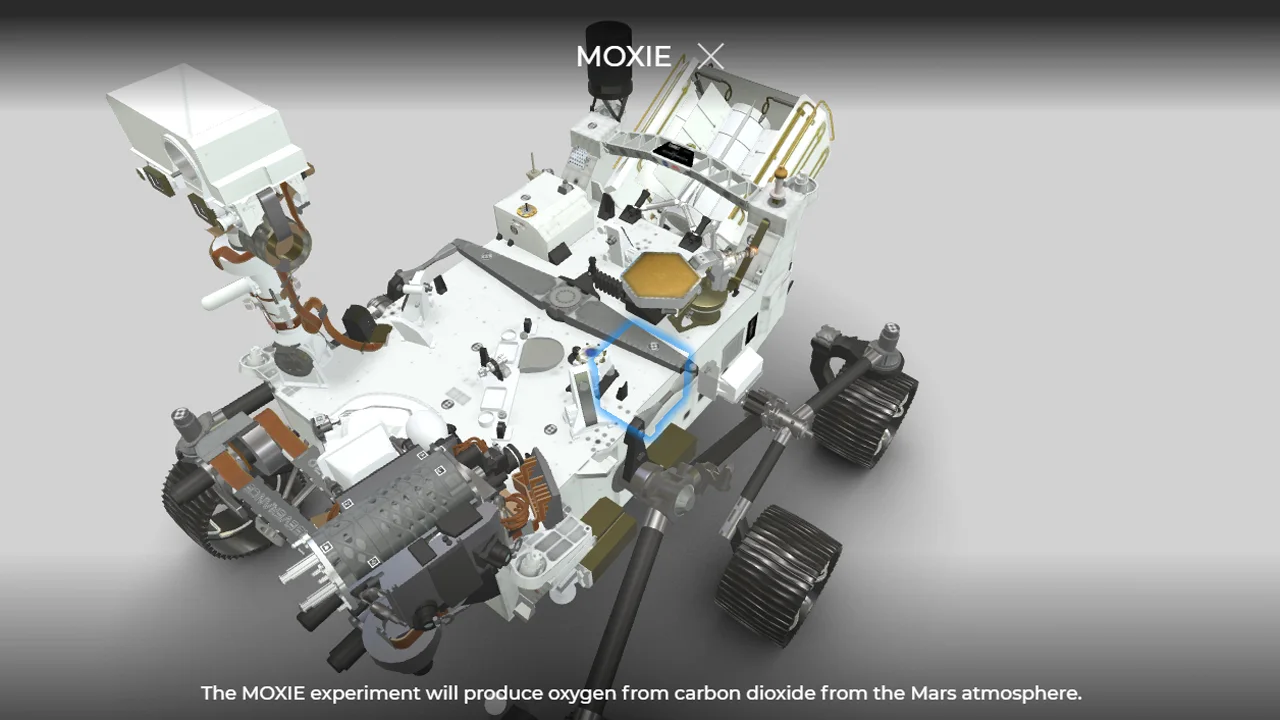
NASA's Perseverance rover produces first oxygen from Martian air
This new result from the Mars 2020 mission could be how future astronauts generate breathable air on the Red Planet.
An experiment on the Perseverance rover has, for the first time, produced oxygen directly from Mars' thin carbon dioxide atmosphere.
While NASA's new rover sits still, waiting for the Ingenuity helicopter to complete its flight tests, the robot has not been idle. Stored within Perseverance's body is an instrument known as the Mars OXygen In-situ resource utilization Experiment, or MOXIE. The purpose of this instrument is to draw in air from around the rover, and through a special process, convert the carbon dioxide (CO2) in the air to oxygen (O2) and carbon monoxide (CO).

This 3D interactive model of the Perseverance Rover highlights the location of the MOXIE instrument. Credit: NASA/JPL-Caltech
On Tuesday, April 20, the mission team switched on MOXIE. After a two-hour warm-up period, the device began generating pure oxygen for the first time. This makes MOXIE the very first instrument to produce oxygen on another world.
"MOXIE isn't just the first instrument to produce oxygen on another world," Trudy Kortes, the director of technology demonstrations within NASA's Space Technology Mission Directorate, said in a NASA statement. It's also the first demonstration of how future astronauts will "live off the land", using the planet's resources rather than having to bring everything from Earth.
"It's taking regolith, the substance you find on the ground, and putting it through a processing plant, making it into a large structure, or taking carbon dioxide – the bulk of the atmosphere – and converting it into oxygen," she explained. "This process allows us to convert these abundant materials into useable things: propellant, breathable air, or, combined with hydrogen, water."
According to NASA, during this first test, MOXIE produced a little over 5 grams of oxygen. That's apparently enough to provide one person with breathable air for about 10 minutes.

* Perseverance's right Navcam took this photo of the rover's deck on April 9, 2021. Inset is a graph of the oxygen production of MOXIE on April 20, 2021. Credit: NASA/JPL-Caltech/MIT Haystack Observatory*
When running at full capacity, MOXIE is designed to generate about twice that amount of oxygen per hour.
Since Perseverance has no capacity or need to store oxygen, both the oxygen and the carbon monoxide byproduct produced by the test were vented into the Martian atmosphere. However, this now shows that future astronauts won't have to rely on oxygen brought from Earth to breathe. A MOXIE system included in human missions to Mars could produce breathable air, as well as fuel for the return rocket, directly from Mars' atmosphere.
"This is a critical first step at converting carbon dioxide to oxygen on Mars," Jim Reuter, the associate administrator for STMD, said in the statement. "MOXIE has more work to do, but the results from this technology demonstration are full of promise as we move toward our goal of one day seeing humans on Mars. Oxygen isn't just the stuff we breathe. Rocket propellant depends on oxygen, and future explorers will depend on producing propellant on Mars to make the trip home."











